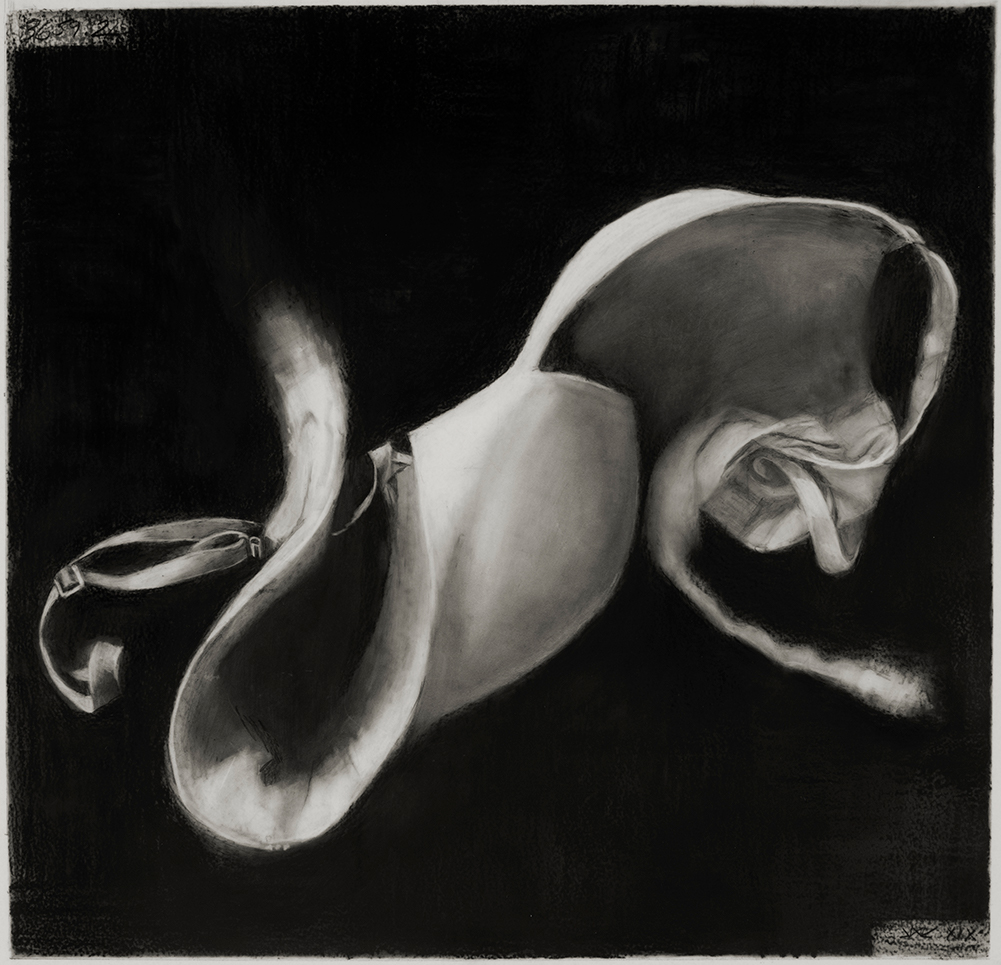Perception of Form:
Jean Wiecha Drawings & Paintings
PERCEPTION OF FORM
Artist’s statement
The bra series started as a technical exercise. At first I thought drawing bras would be instructive, and
also fun and a little silly. Then I realized how hard they were to draw. After that they became an
irresistible challenge. The more I studied them, the more I learned. Joanna Field, in her book On Not
Being Able to Paint , wrote about how objects seem to change as we observe them while drawing or
painting. For me, it wasn’t just that the objects changed while I drew them; making the drawings also
changed my art.
Doing this series forced me to stretch my understanding of complicated forms and how to render them
on a flat surface. I got increasingly interested in how forms end and space begins, in the edges of things
as they curve away from view. I started to finally let go of the notion that drawing an object meant using
line to enclose and separate it from the space around it. In art we talk about hard and soft edges, and
the more I stared at my bra the softer its edges appeared as it rounded into or away from the light.
Sometimes I couldn’t see where it ended and the background began. This seemed kind of magical and a
little profound, and I dug into it.
At first, I defined the challenge as figuring out how to make form fade into emptiness, but over time it
seemed that I had it backwards. The more compelling issue was how to make emptiness gradually
coalesce into form. It seemed like the emptiness was critical for charging the form with energy. It wasn’t
just a notion of negative space but of accepting an equivalence between form and emptiness, that the
space was just as much painted or drawn as the form. In fact, the emptiness seemed to make the form
possible, and the form needed the emptiness as a substrate to emerge from. And every new
configuration of the form altered the shape and quality of the emptiness around it. The two were
continuous, inseparable.
The Buddhist Heart Sutra says in part “Whatever is form is emptiness, whatever is emptiness is form.”
Buddhism interprets form (both things and ideas) as impermanent, fluid constructions. The way we
perceive forms is very much a product of our own minds; as our minds change, we see things differently.
So the idea of impermanence casts emptiness as a sort of pool of infinite possibility that forms rise out
of. Where there is nothing, there is the potential for something. This is completely consistent with the
practice of drawing, in which we create illusions that grow out of blank paper. As our perceptions and
ideas change, we understand and execute our work differently. We get better, try new things, backslide
on a bad day, but the point is we’re always pulling something out of nothing.
What does this have to do with my bra? Well, over time it went from being a very mundane and
predictably comfortable 34A into a shape-shifting aggregate of light and shadow. Capturing this visually
involved a lot of failures and do-overs early on. There were questions followed by experiments and
discoveries, and I threw out a lot of paper. But as I kept at it, good things began to happen. I learned to
stay open to every nuance of the drawing process, coming up with ways to use these pencils, on this
type of support, to convey this subject. I learned that I had infinite amounts of time to get the marks
right and, miraculously, that time folded easily around every curve and crevice in the images, so a
minute might pass, or maybe an hour, and I couldn’t tell the difference and I didn’t care. And I learned
to pay attention to the way I showed up at the easel: I often caught myself being tense, crooked and
vigilant, and holding my breath during the hard parts. When I began to relax, balance my weight, step
back, and breathe, I began to sink more comfortably into my work. It became more about drawing and
less about the drawings.
Most people that see the bra series won’t see this text, and will decide for themselves what the work is
about. The images are ambiguous on purpose and their interpretation is therefore open. For me, now
that I’m on the other side of this series, the ideas of impermanence and possibility, of form and
emptiness, helped me find new art habits and have also settled into my consciousness on other levels.
I’m trying to face unknowns with an appreciation that solutions are out there and that I can gather them
if I stay open to seeing them, even if they are hidden in the dark right now.
Jean Wiecha
2020

